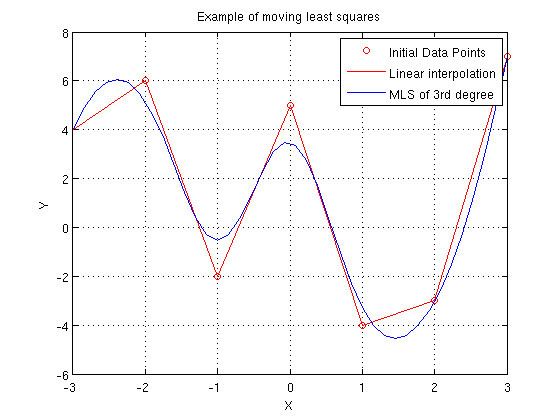 | ||
Moving least squares is a method of reconstructing continuous functions from a set of unorganized point samples via the calculation of a weighted least squares measure biased towards the region around the point at which the reconstructed value is requested.
In computer graphics, the moving least squares method is useful for reconstructing a surface from a set of points. Often it is used to create a 3D surface from a point cloud through either downsampling or upsampling.
Definition
Consider a function
over all polynomials
In the example
